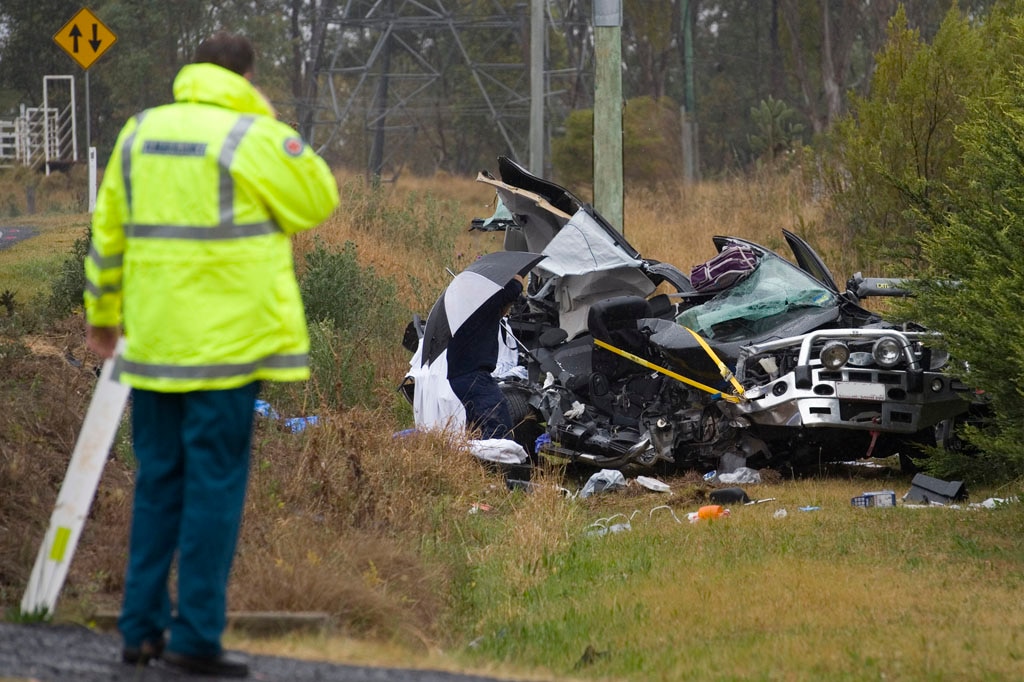"She had nowhere to go. Absolutely nowhere"
THE CRANE that smashed into the Leonardi family car "catapulted" itself off the road and could have easily caused even more tragedy, a coronial inquest heard.

THE CRANE that smashed into the Leonardi family car "catapulted" itself off the road and could have easily caused even more tragedy, a coronial inquest has heard.
Christine Leonardi and her six-year-old son Samuel died after the 2013 crash on the New England Highway near Toowoomba.
It was "a miracle" anybody survived, Coroner John Hutton said on Tuesday.
The coroner shook his head as he was shown what he labelled "distressing" pictures of the devastating crash.
"She was trying to get out of the way," he said, as the routes of the 20 tonne Franna AT20 crane and the Leonardi's vehicle were explained.
"She had nowhere to go. Absolutely nowhere," he said at Brisbane Coroners Court.
Mrs Leonardi was driving. Her two other children were injured that day, but survived, as did Mrs Leonardi's husband John.
The crane's engine brake kicked in at 95kmh, which was the crane's fastest possible speed, counsel assisting the coroner Peter De Waard said.
The crane carried on for 60m after the crash, smashing through a fence and some trees.
"So there's a massive inertia, uncontrolled inertia after the crash [which] carries the vehicle quite some distance," Mr Hutton said.
"Not only is it dangerous on the road if there's a crash. It's also dangerous to surrounding third parties who live adjacent to the road."
The coroner was also concerned at the proximity of power lines to the crash scene.
Mr De Waard said a deflated inside right rear tyre and some handling issues were identified with the crane a few weeks before the crash.
The crane driver, Rodger Douglas Hannemann, arrived to give evidence on Tuesday morning.
He told the court most formal testing carried out before he was licensed to drive cranes did not involve driving on public roads.
Mr Hannemann had been driving cranes for several years elsewhere, including the Chinchilla region, before getting a job with Loughlin Crane Hire in 2012.
He said after joining Loughlin, his new employer seemed happy with his crane driving skills.
Mr Hannemann said no issues or advice related to crane handling or stability were mentioned.
Mr De Waard said there was an "8% gradient" down the hill where the crash happened.
There was a dip at the bottom, then a gradient up of about 2.5% for a short distance before the point of impact.
Mr De Waard said one expert described it as a "moderate" slope, in contrast with an earlier comment from Mr Hannemann that it was a steep slope.
The court heard of some differences between handling trucks and cranes, and the "death wobble" which could affect cranes.
Mr Hannemann said "a death wobble" occurred when a crane fishtailed and the driver was left with no control.
"I found the best way to pull them out of that was acceleration," he said.
The driver was now a self-employed artist.
Mr and Mrs Leonardi had lived in Toowoomba since 1999.
Originally published as "She had nowhere to go. Absolutely nowhere"






